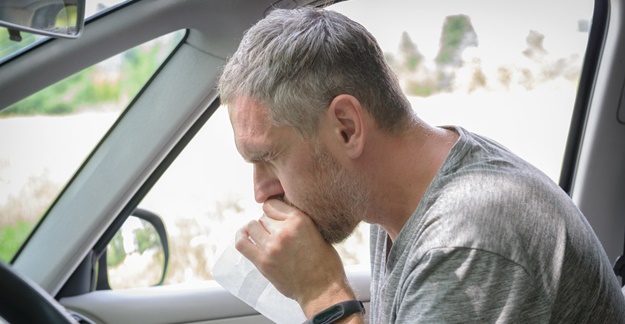There are a slew of medicines and other treatments for motion sickness. Which ones work the best and what are their side effects?
Question: I’m going on a road trip soon and some family members are prone to motion sickness. What are the best drugs or alternative medicine treatments for it?
If your family is anything like my family, somewhere during your travels somebody is going to complain of “getting car sick” before you reach your destination.
Methods of treatment and prevention of motion sickness vary widely. We’ve all heard of Dramamine (dimenhydrinate), which is actually an antihistamine. There are a slew of herbal remedies making treatment claims. There are even wrist bands that stimulate pressure points to relieve motion sickness, and acupuncture before traveling may also help. So, what’s the best treatment for you?
Acupressure wrist bands have shown some effectiveness in some individuals. Their advantage is that they have few side effects. But studies of alternative therapies such as wrist bands have shown a strong placebo effect, meaning treatment seems to be most effective if the individual believes it will work.
Ginger root is often reported to prevent motion sickness. However, a 2000 review analyzing a bunch of studies found it wasn’t more effective than a placebo.
Treatment and prevention with non-prescription antihistamine medications have been used since the 1940s. Over-the-counter antihistamines, besides Dramamine, used for motion sickness include Marezine (cyclizine), Bonine (meclizine) and even Benadryl (diphenhydramine). The major side effects of these medications is drowsiness and dry mouth. However, you should know that newer antihistamines like Claritin (loratadine), Zyrtec (cetirizine) and other “non-drowsy” formulations do not provide any protection for motion sickness.
If these non-prescription medications, including Benadryl don’t work for you, there are medications available by prescription that may prevent or control motion sickness. Phenergan (promethazine) is another antihistamine which is moderately effective. Like the antihistamines mentioned before, it may cause drowsiness or other undesirable side effects.
The “seasick patch,” a prescription medication sold under the name Transderm Scop, contains scopolamine and is applied behind the ear. It’s often considered to be first-line therapy but it can also cause dry mouth, drowsiness and blurred vision in some individuals.
Plan Ahead
So what is the best choice of motion sickness medication for you? It all depends on your individual need and circumstances. But the best advice I can give is to plan ahead. I always tell patients to start motion sickness medications the night before travel. Scopolamine patches take 4-12 hours to become effective after being applied. And taking one of the antihistamine based-products at bedtime the night before travel builds the medication level in your system and may help ensure a restful night’s sleep. Remember to repeat doses of medication according to package instructions the day of travel.
Have any questions about a medicine you’d like to ask Dave Walker about? Email us.






